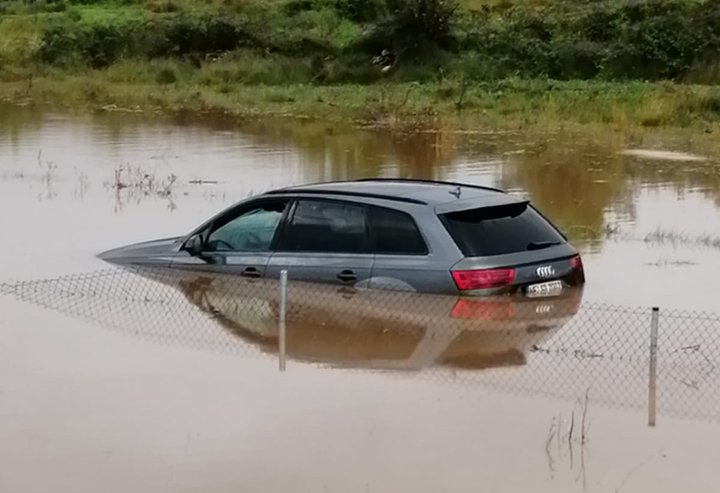If you come upon a flood or standing water, follow these instructions.
Winter is on its way. Due to the current deluge of rain that has covered half of Spain, it may feel as though it has already come. Streets and even major thoroughfares have been inundated, some have become raging rivers, and others have been entirely sealed off, making even the most cautious drivers' driving conditions hazardous.
The DGT in Spain often publishes a set of instructions on how to travel across Spain's highways and byways in challenging weather, with flooding typically being the main cause for worry.
It goes without saying that the best course of action is to find an alternate route if you encounter a section of the road that is under water. Driving recklessly across an uncharted body of water can be deadly for the car and its occupants.
If driving through a flood is your only option, what then? First of all, flowing water and stationary water differ significantly. A motorist should never even consider crossing a river bed or other flowing waterway; it just takes a small amount of water to cause a car to float, and a swift current, especially in a storm, might be fatal.
According to the usual rule of thumb, you shouldn't even consider driving through a body of water if you can't safely cross it on foot. Most passenger cars may have their undercarriages flooded with just six inches of water, leaving you stuck in the middle of a downpour. This can happen very rapidly.
The phrase "slow and steady wins the race"
Your first reaction may be to stomp through the water quickly if you've made up your mind that you can make it. It is really advisable to go gently to avoid creating a bow wave and to avoid having water splash up into the car's components.
Aiming for roughly 2,500 rpm, the driver should engage first gear, crank the engine, and move slowly. In order to prevent water from entering, keep the engine running at a high RPM since this raises the pressure at which the gases exit the exhaust.
Finally, when driving through floodwater, avoid stalling or switching off the engine at all costs. If you do, water will flood into the exhaust, making it hard to restart the vehicle.





